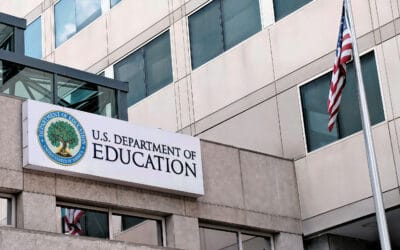Today is the last day of the Federal fiscal year and it appears a deal to avert a federal government shutdown will not materialize. Following up on the email Kevin sent late last week, we wanted to provide a little more detail.
The U.S. Department of Education (ED) recently posted its shutdown contingency plan ahead of the looming funding lapse deadline and we have some additional intel out of Washington D.C. Here is what we suspect a shutdown would mean for California schools:
- ED will operate with a skeleton crew. Of roughly 1,700 ED employees, 1,485 would be furloughed. About 215 remain on duty, with more than half of them (115) in Federal Student Aid (FSA). That means student aid operations (Pell Grants and federal student loans) continue, but most other ED functions slow to a crawl. If a shutdown extends beyond a week, ED anticipates recalling additional staff.
- Title I and IDEA state grants continue “as usual.” ED’s plan states it will make new Title I and IDEA funding available and allow states and grantees to draw down already-awarded funds. For many programs, FY 2025 funds are still available to draw.
- Head Start and Impact Aid (federal property and military) could be affected. If the shutdown drags on, these programs might have to deal with missed payments, depending on grant timing.
- Advance-funded programs are a mixed bag. By law, advance FY 2026 appropriations are scheduled to become available October 1. ED’s plan says obligations and payments for programs with enacted advance funding “may continue,” depending on the length of the shutdown and funds on hand. It explicitly mentions Title I and IDEA availability, but is silent on whether all advance dollars (for example, career technical education or Title II) will be fully released on October 1. Expect some uncertainty here.
- What might pause or stop? Look for pauses to work done in the Office of Civil Rights, new (non-Pell) grants, discretionary grantmaking, and most guidance and regulatory work, unless legally required.
- Pay, personnel and possible layoffs. All federal employees, whether furloughed or working, will receive back pay after a shutdown ends, but they are not paid during it. Federal contractors do not receive back pay. ED’s plan does not reference mass layoffs, although the White House and Office of Management and Budget (OMB) have told agencies to be prepared for potential reductions in force if a prolonged shutdown occurs.
A link to the ED contingency plan can be found here.
More broadly, the effects of a federal shutdown are varied. Social Security, Veterans’ benefits, and Medicare/Medicaid funding will continue, but many facilities operated by the federal government will be closed. Check your travel schedule because while TSA and air traffic controllers will continue to work, they will not be getting paid.




0 Comments